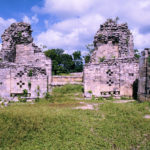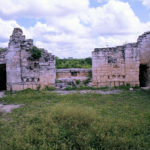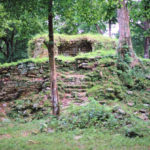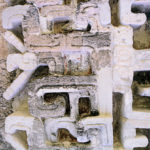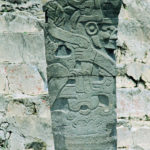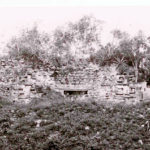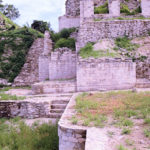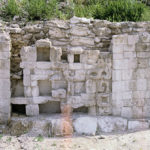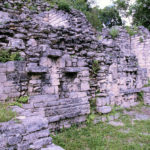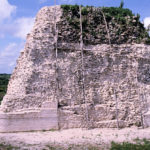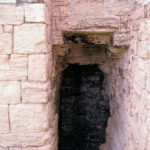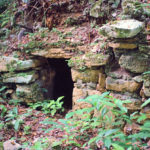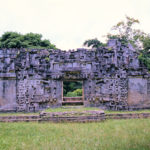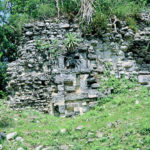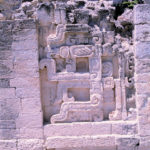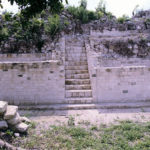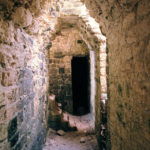Becan:
Maya for “Ditch Filled with Water”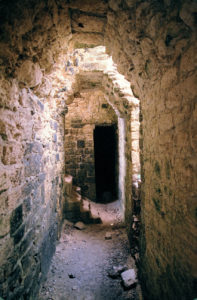
“Becan is built on a limestone outcrop that is as much as 30 feet higher than the surrounding countryside and is visible from the top of Structure I of Group I at Xpuhil about 4 miles away. The site is famous for its ‘moat’, which give the site its name.
The moat is actually an earthwork made of a ditch and embankment that never held water. The earthwork fortification surrounds the site and conforms well to the edge of the limestone outcrop on which Becan was built.
The ditch is roughly kidney-shaped, with a perimeter of 1.2 miles, and it encloses the 46 acres of the site. It is one of the most massive fortifications known in the Maya area, as well as one of the earliest. The ditch is crossed by seven causeways, one of which is the entrance to the site today.
Ceramic and lithic evidence indicates that Becan was occupied from the late part of the Middle Preclassic period (550BC), possibly by colonists from the Peten in Guatemala. There was an apparent decline in population from around AD 250 to 450, and little architecture from this part of the Early Classic period is known at Becan. From 450 to 600 population increased, and there is evidence of Teotihuacan influence in the ceramics.
Between AD 600 and 730 the ditch began to be used as a refuse dump. Rio Bec-style architecture flourished during this period, and this style continued into the next period (730 to 830). From that time to 950 there is evidence of a possible invasion by people from the northwestern part of the Yucatan Peninsula, and some of the existing structures at Becan were adapted and modified “following new spatial requirement,” according to Richard Bueno Cano.
Between 950 and 1050 there are signs of cultural decline, and major architectural activity stopped. From around 1200 to 1450 the only evidence of occupation are some Mayapan-type censers. From then until the early twentieth century, the area was virtually unoccupied.” ~ ~ Joyce Kelly

